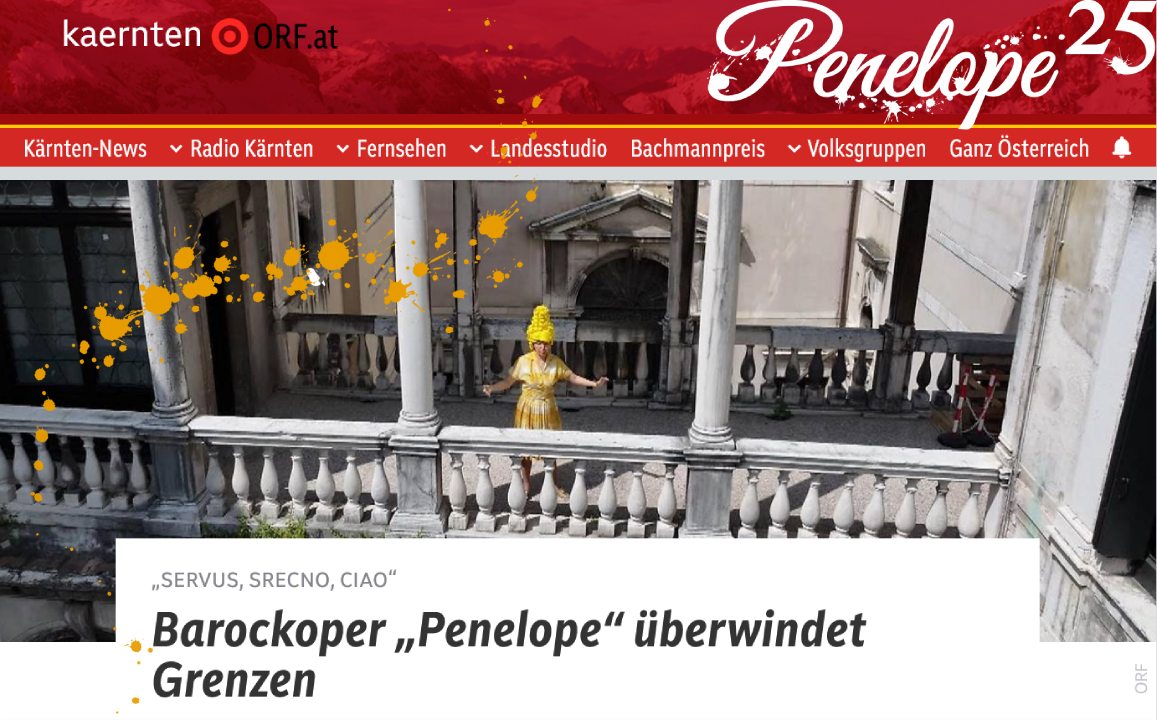
From "Wienerisches Diarium" to a multimedial report
Emperor Charles VI and F. B. Conti would also have been pleased: In 2025, the Venice tour of PENELOPE 2025 was documented by the ORF camera team, while in 1724, the audience of the newspaper Wienerisches Diarium was provided with information concerning the plot and Penelope remained a local production for the carnival festivities in Vienna. A report in “Servus, Srecno, Ciao” provides insights into the transfer of the production to Venice and the cross-border collaboration between the two institutions. Students also share their experiences in an interview. We would like to thank Iris Hofmeister (ORF) and her team for this impressive review of the project.
PENELOPE 2025 – Baroque Opera communicated
Lecture in the series "Forschungsforums" at the GMPU, 24.6.2025, 17:00–ca. 18:00h, Blauer Saal
Ramona Hocker, Helmut Schaumberger, Theresa Aichner und Cornelia Faber
Read more: Baroque opera communicated: Forschungsforum 24.6.25 at GMPU
In contrast to the 20-year odyssey of Ulysses, the team from Klagenfurt and the external musicians made their way south to the Conservatorio di musica “Benedetto Marcello” in Venice to perform F. B. Conti's baroque opera Penelope together with the Venetian students for the last time. In addition to scores and instruments, the luggage also included stage elements, costumes, wigs, music stands, stand lights, gifts for the colleagues in Venice and great joyful anticipation of the reunion and making music together.

8 characters, 14 singers, 26 instrumentalists, 2 conductors, 23 editors, 13 music educators, 5 music pedagogues, 1 composer, 3 stage directors, 5 video- and audio technicians, 1 light technician, 1 stage designer, 1 make-up artist, 1 taylor, 2 translators and a big number of collegues at the GMPU Klagenfurt, the Konzerthaus Klagenfurt and the Conservatorio di musica "Benedetto Marcello" in Venice, who were active around the production and next to the stage:
2 institutions, 1 composer, 1 librettist, 1 work, 1 passion = PENELOPE 25!
Following the performances in Klagenfurt, F. B. Conti's Tragicommedia per musica Penelope will be performed on June 14 at 6 p.m. in the concert hall of the Conservatorio di musica “Benedetto Marcello” in Venice.
This is the last opportunity to enjoy the production PENELOPE 25, created in cooperation between GMPU Klagenfurt and the Conservatorio di musica in Venice! The cast of singers differs from the two casts of the evening version in Klagenfurt, so that a unique version of the work will again result from the interaction of the performers.
On April 24, Ramona Hocker and Klaus Kuchling gave an interview with Christoph Wellner in the Rubato Studio of Radio Klassik Stephansdom, providing insights into the project work from the sources to the interpretative elaboration to the staged performance. In addition, first rehearsal recordings could be heard.
The interview is now available on the YouTube channel of the GMPU: https://youtu.be/Bc3taD3vW7E
The project was also presented in ORF Carinthia on 20. May: https://kaernten.orf.at/player/20250520/KSSC/1747750297000 (part 1) und https://kaernten.orf.at/player/20250520/KSSC/1747750884169 (part 2).
The pedagogical material (in German), elaborated by students of the GMPU under direction of Helmut Schaumberger and Esther Planton, is now available (protected by password). For more information please contact our team:




